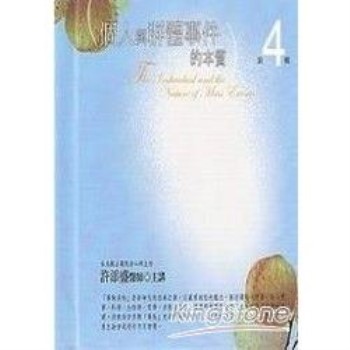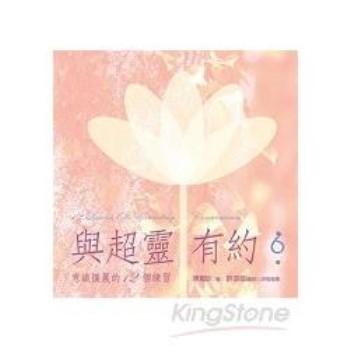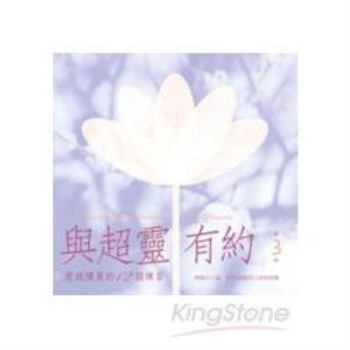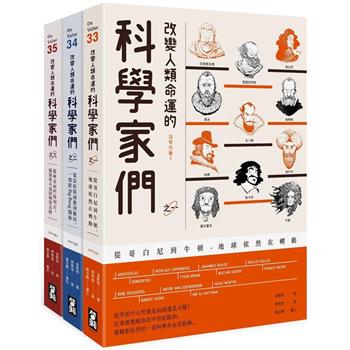This book examines the conservation of water in urban and industrial settings by utilizing effective and inexpensive ways to minimize water consumption and thereby maintain abundant water resources.
| FindBook |
有 1 項符合
Urban and Industrial Water Conservation Methods的圖書 |
 |
Urban and Industrial Water Conservation Methods 作者:Yari 出版社:CRC Press 出版日期:2024-08-26 語言:英文 規格:平裝 / 92頁 / 普通級/ 初版 |
| 圖書館借閱 |
| 國家圖書館 | 全國圖書書目資訊網 | 國立公共資訊圖書館 | 電子書服務平台 | MetaCat 跨館整合查詢 |
| 臺北市立圖書館 | 新北市立圖書館 | 基隆市公共圖書館 | 桃園市立圖書館 | 新竹縣公共圖書館 |
| 苗栗縣立圖書館 | 臺中市立圖書館 | 彰化縣公共圖書館 | 南投縣文化局 | 雲林縣公共圖書館 |
| 嘉義縣圖書館 | 臺南市立圖書館 | 高雄市立圖書館 | 屏東縣公共圖書館 | 宜蘭縣公共圖書館 |
| 花蓮縣文化局 | 臺東縣文化處 |
|
|
內容簡介
作者簡介
Abbas Yari is a project manager and head of the engineering design team and the water supply department in Bandab Consulting Engineers. He has been involved in strategic national projects as the project manager and senior engineer. He is the co-editor of Iran national standards for "Analysis and design of concrete water storage reservoirs" and has written several technical papers in local journals.
He has 30 years professional experiences in water Supply field of Urban/Rural, Industrial and Agricultural development, water conservation in Residential, Commercial, Institutional, and Industrial Sectors and rehabilitation projects including Transmission Pipelines, Distribution Networks, Pumping Stations, Instrumentation, Telemetry and Control Philosophy, Reservoirs, Tanks, Large Scale Pressurized Irrigation Networks, Intakes, Water Saving Devices, Reverse Osmosis Desalination Plants & Brine Transmission and Disposal, Dam Bottom Outlets, Leak Detection, Water Hammer Analysis, Equipment Selection and Commissioning, etc.
Saeid Eslamian is a full professor of environmental hydrology and water resources engineering in the Department of Water Engineering at Isfahan University of Technology, where he has been since 1995. His research focuses mainly on statistical and environmental hydrology in a changing climate. In recent years, he has worked on modeling natural hazards, including floods, severe storms, wind, drought, pollution, water reuses, sustainable development and resiliency, etc. Formerly, he was a visiting professor at Princeton University, New Jersey, and the University of ETH Zurich, Switzerland. On the research side, he started a research partnership in 2014 with McGill University, Canada and 2019 with University Hawaii, USA. He has contributed to more than 600 publications in journals, books, and technical reports. He is the founder and chief editor of the International Journal of Hydrology Science and Technology (IJHST). Eslamian is now associate editor of three important publications: Journal of Hydrology (Elsevier), Eco-Hydrology and Hydrobiology (Elsevier), Journal of Water Reuse and Desalination (IWA) and Journal of the Saudi Society of Agricultural Sciences (Elsevier). Professor Eslamian is the author of more than 40 books and 200 chapter books.
Dr. Eslamian’s professional experience includes membership on editorial boards, and he is a reviewer of more than 100 Web of Science (ISI) journals, including the ASCE Journal of Hydrologic Engineering, ASCE Journal of Water Resources Planning and Management, ASCE Journal of Irrigation and Drainage Engineering, Advances in Water Resources, Groundwater, Hydrological Processes, Hydrological Sciences Journal, Global Planetary Changes, Water Resources Management, Water Science and Technology, Eco-Hydrology, Journal of American Water Resources Association, American Water Works Association Journal, etc. UNESCO has also nominated him for a special issue of the Eco-Hydrology and Hydrobiology Journal in 2015.
Professor Eslamian was selected as an outstanding reviewer for the Journal of Hydrologic Engineering in 2009 and received the EWRI/ASCE Visiting International Fellowship in Rhode Island (2010). He was also awarded outstanding prizes from the Iranian Hydraulics Association in 2005 and Iranian Petroleum and Oil Industry in 2011. Professor Eslamian has been chosen as a distinguished researcher of Isfahan University of Technology (IUT) and Isfahan Province in 2012 and 2014, respectively. In 2016, he was a candidate for national distinguished researcher in Iran.
He has also been the referee of many international organizations and universities. Some examples include the U.S. Civilian Research and Development Foundation (USCRDF), the Swiss Network for International Studies, the Majesty Research Trust Fund of Sultan Qaboos University of Oman, the Royal Jordanian Geography Center College, and the Research Department of Swinburne University of Technology of Australia. He is also a member of the following associations: American Society of Civil Engineers (ASCE), International Association of Hydrologic Science (IAHS), World Conservation Union (IUCN), GC Network for Drylands Research and Development (NDRD), International Association for Urban Climate (IAUC), International Society for Agricultural Meteorology (ISAM), Association of Water and Environment Modeling (AWEM), International Hydrological Association (STAHS), and UK Drought National Center (UKDNC).
Professor Eslamian finished Hakimsanaei High School in Isfahan in 1979. After the Islamic Revolution, he was admitted to IUT for a BS in water engineering and graduated in 1986. After graduation, he was offered a scholarship for a master’s degree program at Tarbiat Modares University, Tehran. He finished his studies in hydrology and water resources engineering in 1989. In 1991, he was awarded a scholarship for a PhD in civil engineering at the University of New South Wales, Australia. His supervisor was Late Professor David H. Pilgrim, who encouraged him to work on "Regional Flood Frequency Analysis Using a New Region of Influence Approach." He earned a PhD in 1995 and returned to his home country and IUT. In 2001, he was promoted to associate professor and in 2014 to full professor. For the past 25 years, he has been nominated for different positions at IUT, including university president consultant, faculty deputy of education, and head of department. Eslamian is now director for Center of Excellence in Risk Management and Natural Hazards (RiMaNaH).
Professor Eslamian has made three scientific visits to the United States, Switzerland, and Canada in 2006, 2008, and 2015, respectively. In the first, he was offered the position of visiting professor by Princeton University and worked jointly with Professor Eric F. Wood at the School of Engineering and Applied Sciences. The outcome was a contribution in hydrological and agricultural drought interaction knowledge by developing multivariate L-moments between soil moisture and low flows for northeastern U.S. streams.
Recently, Professor Eslamian has published the editorship of 11 handbooks published by Taylor & Francis (CRC Press): the three-volume Handbook of Engineering Hydrology in 2014, Urban Water Reuse Handbook in 2016 (IWA partnership), Underground Aqueducts Handbook (2017), the three-volume Handbook of Drought and Water Scarcity (2017), Constructed Wetlands: Hydraulic Design (2020), Urban and Industrial Water Conservation Methods (2020) and Handbook of Irrigation System Selection for Semi-Arid Regions (2020). Two-volume Handbook of Water Harvesting and Conservation is a publication in 2020 by Wiley that has been awarded the NYAS partnership. An Evaluation of Groundwater Storage Potentials in a Semiarid Climate and Advances in Hydrogeochemistry Research by Nova Science Publishers are also his book publications in 2019 and 2020.
Faezeh Eslamian is a PhD Holder of Bioresources Engineering in McGill University. Her research focuses on the development of a novel lime-based product to mitigate phosphorus loss from agricultural fields. Faezeh completed her bachelor and master’s degrees in Civil and Environmental Engineering from Isfahan University of Technology, Iran where she evaluated natural and low-cost absorbents for the removal of pollutants such as textile dyes and heavy metals. Furthermore, she has conducted research on the worldwide water quality standards and wastewater reuse guidelines. Faezeh is an experienced multidisciplinary researcher with interest in soil and water quality, environmental remediation, water reuse and drought management.
Control Theory for Practical Applications: With MATLAB Demonstration Programs
Food Security, Nutrition and Sustainability Through Aquaculture Technologies
Novel Nanocarriers for Skin Diseases: Advances and Applications
Advances in Autonomous Navigation Through Intelligent Technologies
Nonthermal Light-Based Technologies in Food Processing
Advances in Computational Intelligence Systems: Contributions Presented at the 23rd UK Workshop on Computational Intelligence (Ukci 2024), September 2
The Amateur Plankton Researcher’s Practical Guide: How to Study Plankton at Home
The Challenges of Era 5.0 in Accounting and Finance Innovation
Electrimacs 2024: Selected Papers - Volume 1
|











